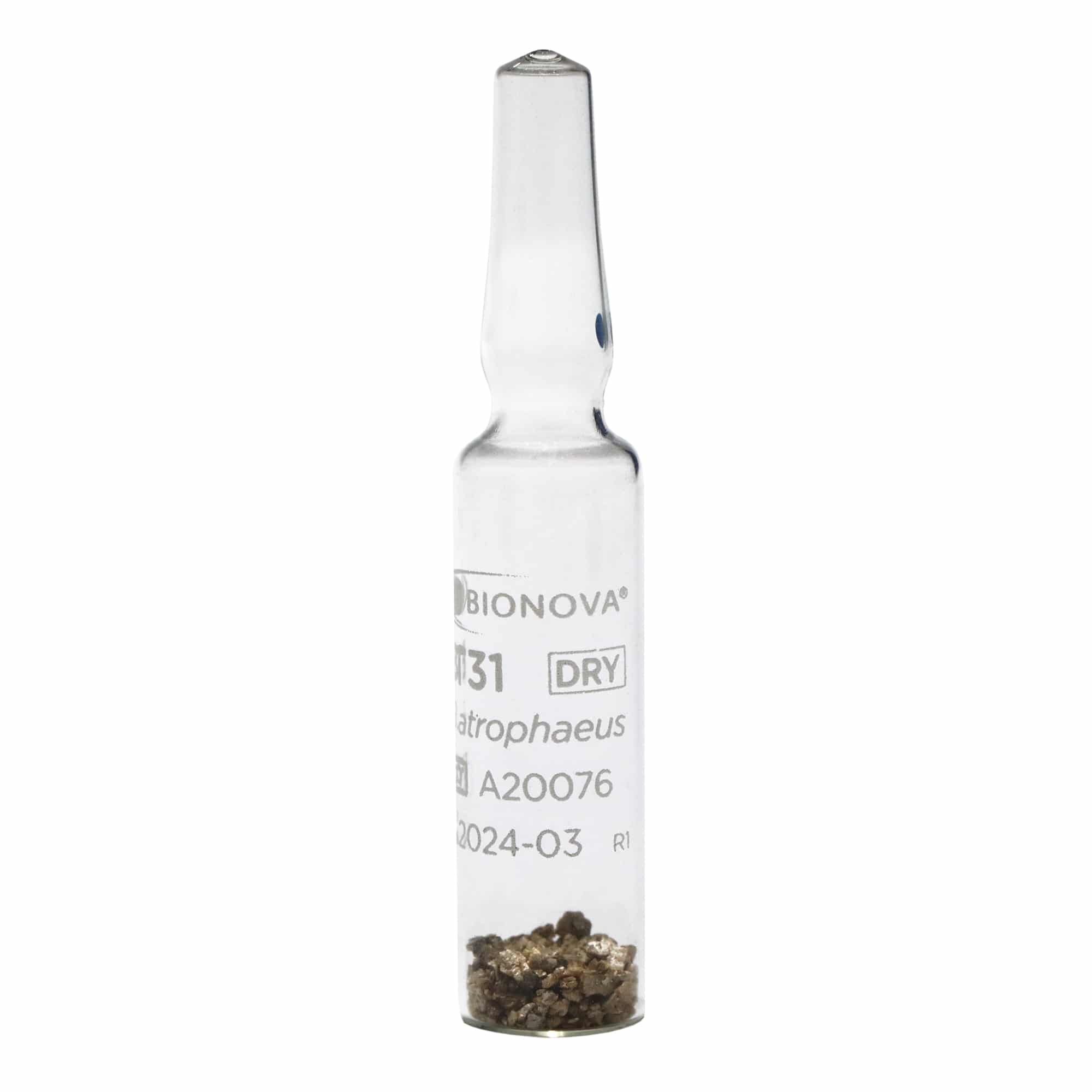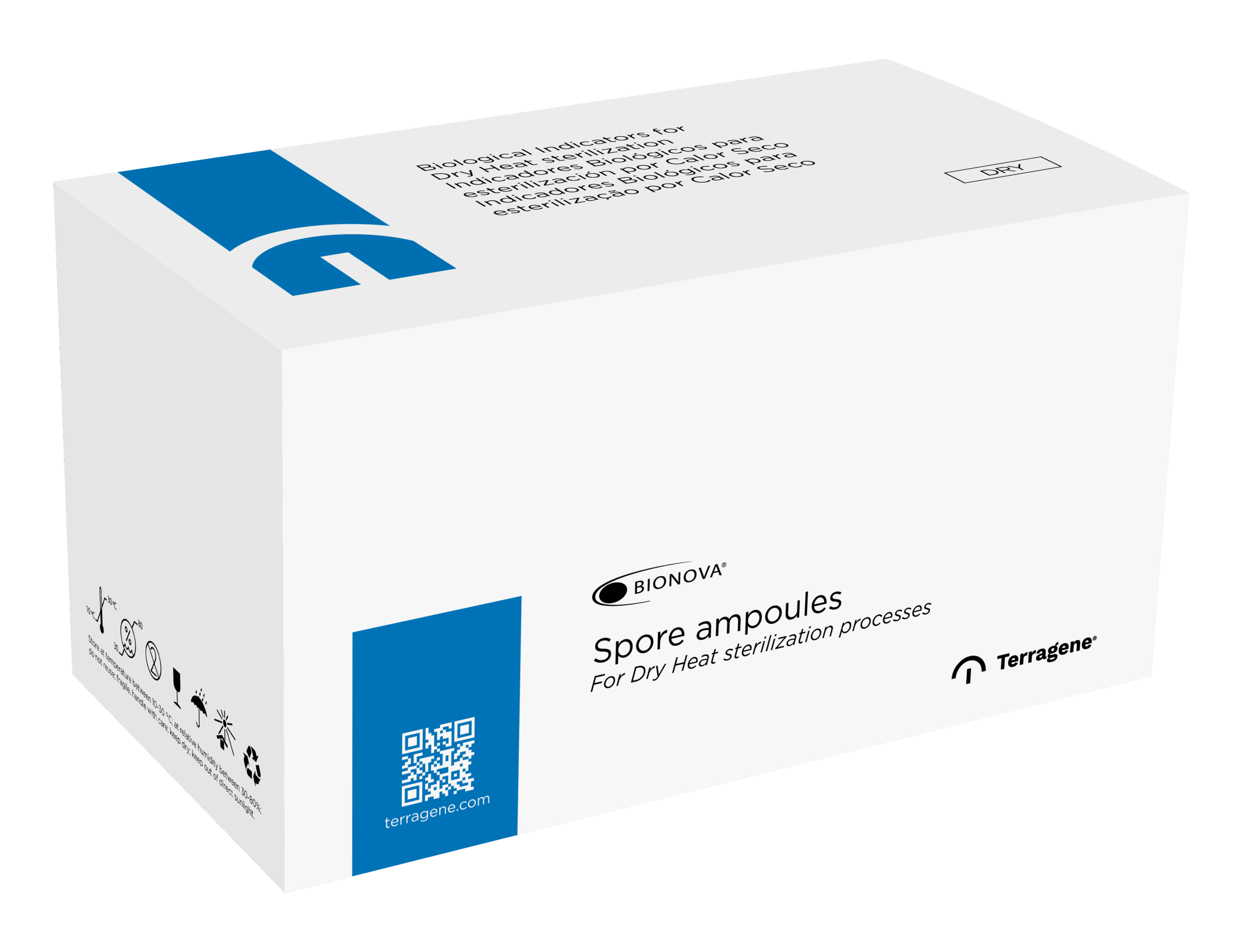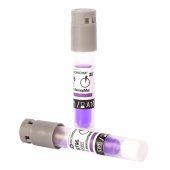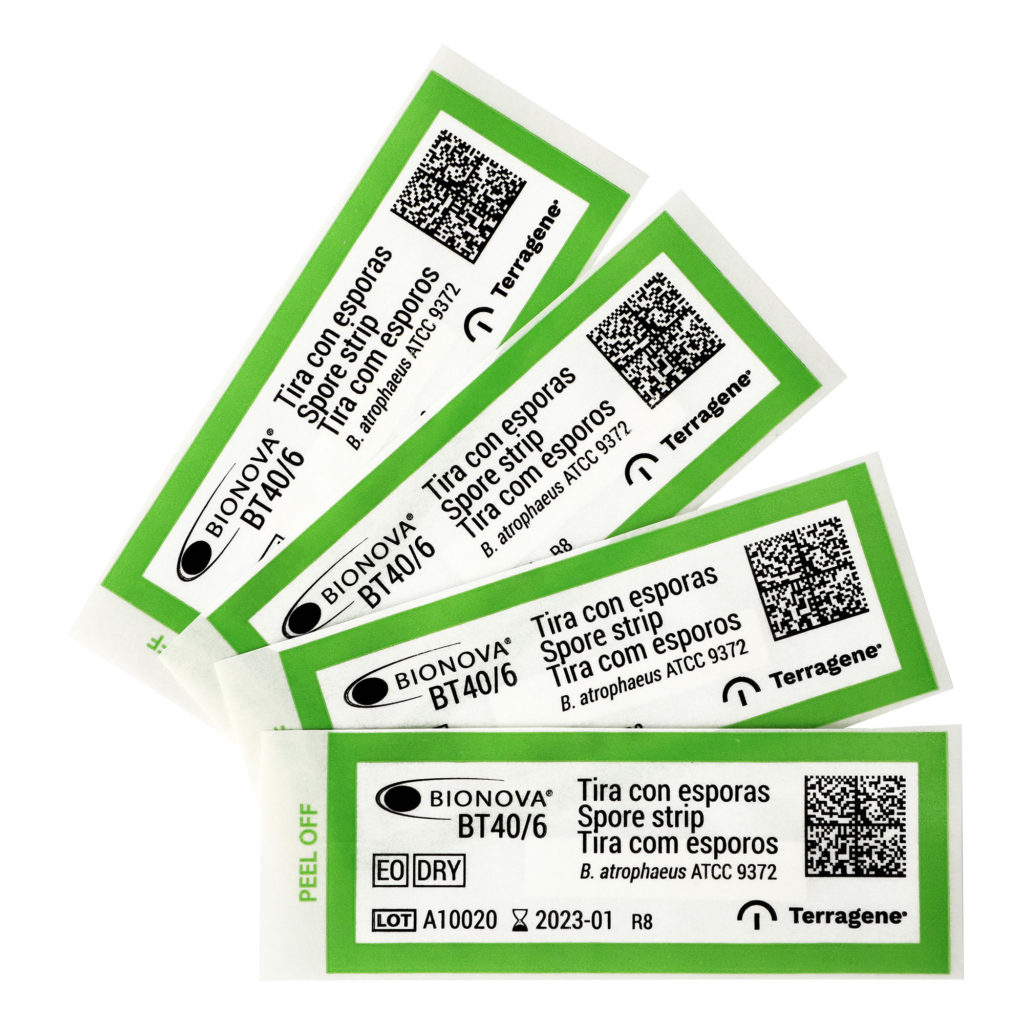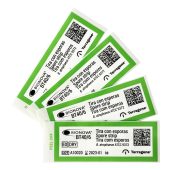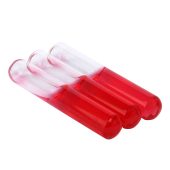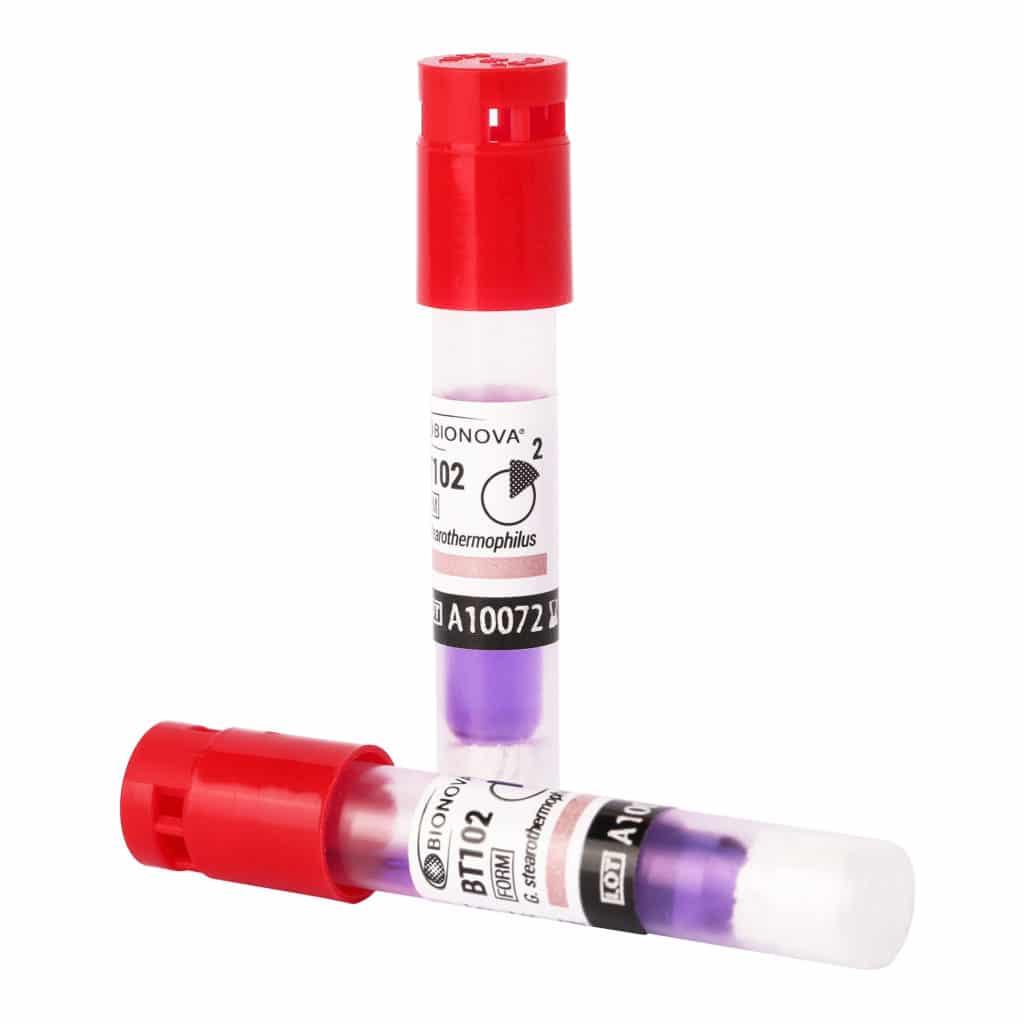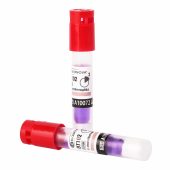
Spore ampoule for Dry Heat sterilization processes
Additional information
| Brand | |
|---|---|
| Process | Dry Heat |
| Packaging | 50u per box |
| Microorganism | Bacillus atrophaeus (ATCC® 9372) |
| Population | 10^6 |
| Read-Out Time | 72 h |
| Initial Color | Blue |
| Final Color | Yellow |
| Indicator Type | Class1, according to risk (ANMAT) |
| Regulations | IRAM 37102-1:1999, ISO 11138-1:2017, ISO 13485:2016 / NS-EN ISO 13485:2016., ISO11138-4:2017 |
| Possible target markets |
Description
The Bionova® BT31 Biological Indicator is designed for the control of Dry Heat sterilization processes. It is compatible with extremely high temperatures generated during depyrogenation cycles and sterilization processes in ovens and dry heat tunnels. The contents of the ampoule should be incubated in the Bionova® MC1030-2 crop medium tube or a culture medium suitable for the growth of Bacillus atrophaeus ATCC® 9372 (ATCC is a registered trademark of American Type Culture Collection). If the sterilization process was unsuccessful, the crop indicator medium will change from blue to yellow after incubation at 37±2 °C, thus indicating the presence of living spores. If the sterilization process was successful, the indicator medium will remain blue, being the final reading taken after 72 hours of the indicator’s incubation at 37±2 °C.
Description
The Bionova® BT31 Biological Indicator is designed for the control of Dry Heat sterilization processes. It is compatible with extremely high temperatures generated during depyrogenation cycles and sterilization processes in ovens and dry heat tunnels. The contents of the ampoule should be incubated in the Bionova® MC1030-2 crop medium tube or a culture medium suitable for the growth of Bacillus atrophaeus ATCC® 9372 (ATCC is a registered trademark of American Type Culture Collection). If the sterilization process was unsuccessful, the crop indicator medium will change from blue to yellow after incubation at 37±2 °C, thus indicating the presence of living spores. If the sterilization process was successful, the indicator medium will remain blue, being the final reading taken after 72 hours of the indicator’s incubation at 37±2 °C.
HAVE A QUESTION ABOUT OUR PRODUCTS?
WE´RE HERE TO HELP.




